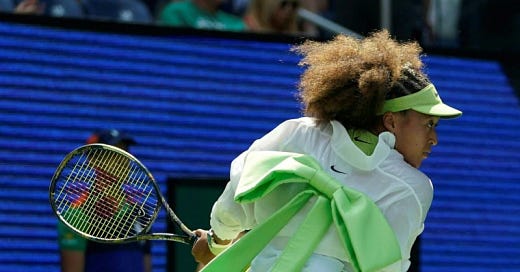A comment tried to rip into me this week. I was supposedly shallow and silly for continuing to talk about the clothes women wear when they walk into the public eye.
Why aren’t we focusing on their policy? Who cares what they look like?
Flashing before my tired mind were all the hypersexual or animalistic depictions of Black women in American media and ephemera over the last 100 years. I thought of the power of the golliwog and her hair. I thought of the bottle cap openers from the fifties that were Black women’s butts. I thought of the postcards of little “slutty” pregnant Black children, the captions insinuating how Black girls longed to be impregnated by grown White men.
I thought of Laura Scudders, who brazenly posted a video of herself pretending to be Vice President Kamala Harris, in a Blaccent Harris has never used, talking to a fake audience of Black people who are hungry for peanut butter “sammiches”. If Laura hadn’t been so young, I wouldn’t have felt hot with anger at her summation of a talented, smart, beautiful presidential candidate.
In a moment of saltiness and quite ungenerously, I thought of how Laura did not have brains going for her, just young white skin. She didn’t think the whole internet could see her (which was just as stupid as the accent). She didn’t care that her accent, fake speech, and representation of Kamala was so far off base from the truth of a real person. She saw black skin and knew what her audience would think and laugh at. The shorthand for blackness as stupid, as silly, and as scheming.
The control of our image as women (and especially Black women) is a kind of privilege and power we did not always have.
Naomi Osaka stepped onto the court of the US Open this last week, having anointed herself in oversized bows, flounced rows of tulle, and a striking feminine silhouette.
This was not a fantastical whim or mistake. It was a calculated play before her games even began.
She took my breath away like she did when the butterfly famously alighted upon her all those years ago. Before she was a mother. Before she pushed back on rude journalists. Before she told us what it was like to be shy and human and nervous and still driven. The butterfly, the explosion of dyed hair, the way her whole self hit the court. A proudly Japanese and Haitian woman at the top of her game. Every bit the court princess.
I remember how this blackness was erased when she beat Serena Williams. Mark Knight, an Australian cartoonist flattened her blackness into thin blondness. He then took the incredible and passionate Serena Williams and rendered her as a brute. He told the press later that he just saw “an African American woman, which she is” and “her outrageous outfits” and drew her as he saw her. He didn’t mean to be “racial”.
But there it is. He drew her how he saw her. As scary, as threatening, as monstrous, as ugly, and as unfeminine. He took the tulle and the tutus and the beauty and distorted it down to the million composites of images of black women generations have stewed in.
Serena Williams’ insistence on showing up to the court with intention, aware of how a million more images will be taken of her, has been an embattled one. Her clothing has been picked apart and policed. As has her body.
The body she famously almost lost when her medical team - like clockwork- did what the American medical culture often does to black mothers. They assumed her to be a strong black wall, with brute strength, who didn’t need the care she requested over and over again. Every time I see her now step out looking royal and feminine and glorious, I think of what she is adding the the canon. I think of how much richer the images will be because of her.
Naomi just became a mother. No doubt she went into labor thinking of what happened to her counterpart Serena. No doubt she thought of her when she became the second one to step out in an entirely custom couture kit.
I wanted to cry when I saw the bows. On her feet, on her back, covering her ears, and then the next day the pearls studding her braids. I said on TikTok it is no small thing to have the power to adorn oneself and direct another image. How I wonder, did she feel when that cartoon went viral all those years ago and saw her blackness erased?
Naomi’s kit was made in collaboration with Yoon Ahn. They wanted to borrow from the Japanese media and art of the magical girl, who can transform and perform feats that defy convention and power. In the 90s, Sailor Moon and her bows took this a step further. Instead of these feats simply causing chaos and entertainment as a plot point, her transformational feats were like a super hero’s. Her femininity would become exaggerated the more powerful she became. Some wrote that it broke this link between femininity and weakness.
Femininity has been routinely wrested from or contested in black women in America. To contest it is to challenge the narrative of what is owed to “good” women. It is to withhold respect and care and concern from a woman who “doesn’t need it” or doesn’t deserve it.
Black women as brutish or strong super heroes who of course can beat “poor” little white girls is an attitude that has plagued tennis. For Naomi to step out like she did as loudly feminine and Japanese and Black and glamorous is intentional. I dare say, it was one of her most powerful serves.




This piece is sharp and informative! I was so captivated throughout the reading. Your penmanship is excellent!